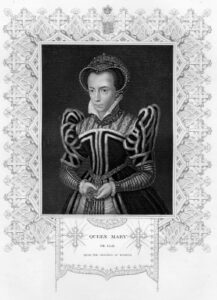
If you watched “The Tudors”, you may have been surprised by the scenes of the teenage Mary sharing a bed with her little half-sister Elizabeth, daughter of the woman she viewed as a whore, and showing affection towards her. Were these scenes just figments of Michael Hirst’s imagination?
Well, of course these scenes are fictional, we do not know that any of those loving and affectionate conversations happened but we do have evidence that Mary did dote on Elizabeth and that they had quite a sisterly relationship when Elizabeth was young – see Elizabeth and Mary Part 1 for details on that. But, things changed when Mary became Mary I Queen of England.
The Early Years
When Mary first came to the throne, amidst much rejoicing from her subjects who saw her as the true heir to the throne, everything looked very “rosy” between the sisters. As I said in Part 1, Elizabeth joined Mary in her triumphant march into London to claim the throne and Elizabeth was also given a place of honour at Mary’s coronation. Mary had a special carriage beautifully decorated for Elizabeth and Anne of Cleves, and even gave them gorgeous gowns to go with the decor of the carriage. It really looked like Mary still saw Elizabeth as her sister and as an important person, so what happened?
Tracy Borman in her book “Elizabeth’s Women” writes of how the relationship between Mary and Elizabeth disintegrated as quickly as the short-lived “euphoria” of Mary’s succession. Mary was very different to Elizabeth, both in looks and character, the two main differences being her lack of pragmatism and her belief that as a woman she was weak and needed a husband to help her govern her country. She also gave far too much authority to her councillors, because they were men who knew better than her, and also listened far too much to ambassadors like Simon Renard, the Imperial Ambassador, who loved nothing better than stirring up trouble between Mary and Elizabeth. Renard spent his time trying to convince Mary that Elizabeth was a traitor and a threat, and that she was plotting Mary’s downfall. It didn’t take much to make Mary think the worse of Elizabeth; perhaps she had inherited her father’s paranoia about threats to the throne or perhaps she had never really forgiven Elizabeth for being the daughter of Anne Boleyn. Whatever the reason behind it, Mary believed Renard and even commented that she had always thought that Elizabeth would turn out just like her mother.
As Mary became more paranoid and hostile, Elizabeth was also beginning to resent her half-sister. The very first Parliament of Mary’s reign passed an act which overturned the annulment of Mary’s parents’ marriage, making Mary legitimate. Obviously, this act still left Elizabeth a bastard and took away one of the things that the women had in common, their illegitimacy. Mary was now Henry VIII’s true daughter and rightful heir and Elizabeth was nothing but a royal bastard with no rights. The thinking behind this act and the procedure may well have stirred up the old feelings of bitterness in Mary, as she thought of the end of her parents’ marriage and her father’s passion for Anne Boleyn, and the act itself must have caused Elizabeth to feel a new resentment towards Mary.
From Bad to Worse
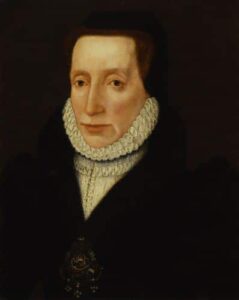
Things went from bad to worse when Mary, who had been listening far too much to Renard’s whisperings, made it known that she wanted to repeal Henry VIII’s statute, which had made Elizabeth next in line to the throne, and instead make her cousin, Lady Margaret Douglas, heir.
Lady Margaret Douglas was the daughter of Henry VIII’s sister, Margaret, and so was a Tudor and did have some claim to the throne but Elizabeth was Henry’s daughter! Mary and Margaret had much in common, being of a similar age and both being of the Catholic faith, and as Mary began to distrust Elizabeth more and more she gave Margaret precedence over her half-sister at court and state functions. This was a public denial of Elizabeth’s place as heir to the throne and a public display of her growing hostility.
Mary finally gave up her plan of repealing Henry VIII’s statute when her councillors advised her that she would be stirring up trouble by alienating Elizabeth. However, Renard and the Venetian ambassador, Michiel, continued being openly hostile towards Elizabeth and I would think that Elizabeth’s nose was already out of joint after her treatment at court. Elizabeth did not show her true feelings though and instead treated Mary with courtesy and respect, which must surely have been an act given Mary’s actions towards her.
Elizabeth’s parentage was not the only sticking point between the sisters, religion was also a huge problem. Mary was intent on returning England to Catholicism but Elizabeth had Protestant leanings. After Edward VI’s death, Mary did allow him to be buried with Protestant rites but insisted on a Catholic mass for his soul and invited Elizabeth and Anne of Cleves to attend. Both women failed to attend this mass and Elizabeth continued to miss mass for the next two months, infuriating Mary with her dismissal of this important religious ritual.
This lack of solidarity, and Renard’s continued whisperings about Elizabeth and how her non-attendance was a sign that she was plotting against Mary and defying her, resulted in Mary demanding that Elizabeth should attend mass on the Feast of the Nativity of the Virgin. Tracy Borman writes of how Elizabeth, who had heard that Mary was beginning to distrust her and believe that she was disloyal, wrote back to Mary asking for a private audience with her. At this audience, Elizabeth, always the wonderful actress, threw herself both figuratively and physically at her sister’s mercy, weeping on her knees in front of the Queen and begging her forgiveness for any offence that she had caused. She pleaded ignorance of the Catholic faith and its doctrines to excuse her behaviour and asked Mary to help her learn by sending her books. This was a clever ploy because it put the onus on Mary to help her, it massaged Mary’s ego and Elizabeth never actually promised to turn to the Catholic faith!
Mary would not back down over the mass of the Feast of the Nativity of the Virgin and even though Elizabeth complained of violent stomach cramps as soon as she arrived at church Mary did not let her go home. Mary was obstinate and stubborn and Elizabeth was just going to have to comply, but somehow Elizabeth managed to get away with missing more masses in the future!
As you can see, these two half-sisters had a very volatile relationship but it did get worse as Elizabeth replaced the executed Lady Jane Grey as the figurehead of rebellions and uprisings. In my next post I will write about how the sisters’ relationship deteriorated to the point where Elizabeth very nearly lost her life.


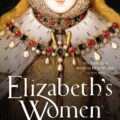

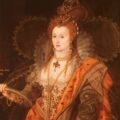
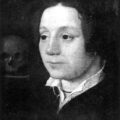

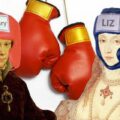
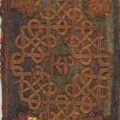
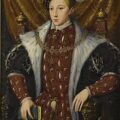


I refused to watch the Tudors after they cast a brunette for Henry! (I am dying to read Ms Borman’s new book and Alison Weir’s “The Lady In The Tower”). I thought the film “Elizabeth” with Cate Blanchette was trash, but there was one very perceptive scene where the dying Mary (Kathy Burke) was seen in almost total darkness, except for a fire, and she oozed hatred towards Elizabeth, because she was dying and Elizabeth would inherit the throne and undo Mary’s awful attempt at restoring Catholicism. It was chilling.
Thanks for your comment, Fiz. They’re both great books, you’ll enjoy them. I’ve just seen some photos of Jonathan Rhys Meyers on the set of Season 4 and they have made his hair go grey but he is far from the obese, ailing and smelly Henry of real life!
I thought the first Cate Blanchett film was ok as entertainment but I didn’t enjoy the second one. I much prefer the two series with Helen Mirren and Anne-Marie Duff. I remember that scene though and you’re right – pure hatred and very chilling.
I really admire how Elizabeth learned how to “play the game” at court and survive during Mary’s reign. She lacked the ability to trust herself and relied on others too much. Elizabeth may have procrastinated (we all have our faults) but she knew how to rule England as a woman and have her subjects know that she was in charge. She seemed to have learned from Mary’s mistakes and the other hardships she had to endure.
Hatred tinged with Madness on Mary’s side? That is also a possibility although under the circumstances of her youth she could have been pushed over the edge. However, interesting to note that he grandmother, Isabella of Portugal became completely unhinged after the birth of her daughter, Isabella of Castilla and was encarcerated for most of her life. Catherine of Aragon’s older sister, Joan was also tainted by the curse of madness and after producing various children by Philip of Flanders was also encarcerated. Mary’s granmother, isbalella of Castille together with her husband Ferdinand of Aragon introduced the inquisition into Spain on a huge scale. The religious fanatiscm of Isabella must have rubbed off onto Catherine of Aragon who passed it on to her daughter, but what other genes did she pass on. And we all know that Mary eventually married Philip of Spain who was the grandson of Joan the Mad!!!
Pitted against all that Elizabeth did a very good job in keeping her neck and going on to become a great queen,
Hi Lisa,
Tracy Borman makes the point that Elizabeth spent Mary’s reign watching Mary and learning from her mistakes. Mary was the first Queen Regnant since 1141 when Matilda reigned and this reign had been disastrous as had been the times when Edward II’s wife Isabella and Henry IV’s wife Margaret of Anjou seized power. Elizabeth needed to learn from Mary’s actions and mistakes if she had any chance of being a good queen and showing the world that a female could reign successfully. It’s a shame that Mary was not more like her grandmother Isabella of Castile who was one of the greatest monarchs in Spanish history, instead Mary was quite weak in that she always deferred to men.
Hi Jenny,
Poor Mary, I guess she could have had some of the “madness gene” but I think her awful childhood made her a very damaged woman. I think “The Tudors”, although it has so many glaring mistakes and inaccuracies, was good at the way that it portrayed Mary and showed the childhood she had. She had so much to deal with – bitterness and grief over her parents’ marriage and the Anne Boleyn saga, losing her mother after seeing her treated so cruelly and being banned from visiting her, losing the status of princess and being made illegitimate, feeling threatened by her father and his councillors and being forced to compromise her faith, being given the hope of marriage and then having it taken away again, feeling threatened by her brother into giving up her beloved Mass…the list goes on and I think if I had gone through half the experiences she had then I would be a complete wreck! No wonder she suffered with ill health.
I think Elizabeth was very clever in the way that she dealt with Mary and making that agreement with Mary that if there were any allegations against her that she would have the opportunity to have an audience with the Queen to put her case across. I think she also knew her half-sister well and knew how to appeal to her.
Hi Claire,
Yes Isabella of Castilla is held up to be one of Spain’s greatest monarchs (I live in Spain) but she was also responsible for the deaths of thousands of Jews and Moors even though they had converted to Christianity (under duress of course). Spain under the Moors was considered to be the cntre of learning in the Middle Ages, where people of all religious backgrounds went to study mathematics, astronomy, etc. The Moors of those days were extremely advanced and bathing was a necessary part of their everyday life. Under the restrictions of the Inquisition, anyone caught bathing was a herectic and therefore confined to tortutre and the flames of the “autos de fe” (Acts of Faith). This was the grandmother of Mary and Mary also introduced the Inquisition into England .
Many people fled Spain (the Sephardic Jews went basically to Turkey) and it is only in recent times that Spain has apolised for the past. By ridding Spain of teh Moors (who were not all sweetness and light I will admit), Isabella tookl Spain back at least 500 years!!! And it never recovered – It had a short time as Top Dog in teh Americas stakes but by the time Philip II (Mary’s husband) had come to the throne it was on its way downhill and especially after the Armada, never recovered. Mary Tudor was Philip’s 2nd wife – He went on to marry twice more and finally produced a son from his 4th wife who was not only his cousin but his niece (Habsburg).
Thanks for all the information on the Moors and Isabella.
Yes, it’s funny that Mary is known as “Bloody Mary”, yet Isabella is known as a fine monarch! I guess it’s like Henry VIII – although he’s known for being married six times and executing two of his wives, he is generally revered and yet he may have been responsible for 72,000 deaths!
I too live in Spain (about an hour from Granada and the wonderful Alhambra) and I do find it interesting when my son learns about Ferdinand and Isabella in history at school. It’s wonderful to see things from a different perspective. We have Moorish remains around our village, including a mill and the terracing they introduced for agriculture and it is sad that Spain went backwards when they left, just like England when the Romans left.
Hi Claire,
Replying to your comment psoted at 3.50 a.m. I am inclined to agree with what you say. I think the huge diffference between how the two sisters reacted is that Mary was quite “old” i.e. in heer late teens/early 20s????? when the Bolyn affair cropped up. Before that she was treated as a Princess of the Realm and her father keeping the “status quo” as “Defender of the faith”. Her mother was educated to expect affairs but not as the Boleyn one was to turn out. Mary would have been kept in the dark.
Meanwhile Elizabeth from a very early age got similar treatment and kids can adapt far better than older people which is why I am sure Elizabeth did so.
As I mentioned in a previous post, Henry was completely au fait with the workings of the church of the time and knew of a number of precedents for annullments of marriage nd thought he was on a winner. (Eleanor of Aquitaine being one very good example) but he was on a dodgy wicket with the Pope of the time who was priisoner of Katherine of Aragon’s nephew , the Holy Roman Emperor, Charles V of Austria and Charles I of Spain.
And Henry also liked to think of himelf as a poet and composer – but the famous one (not written by him) is the poem on the fate iof his wives (and in order)
Divorced
Beheaded
Died
Divorced
Beheaded
Survived